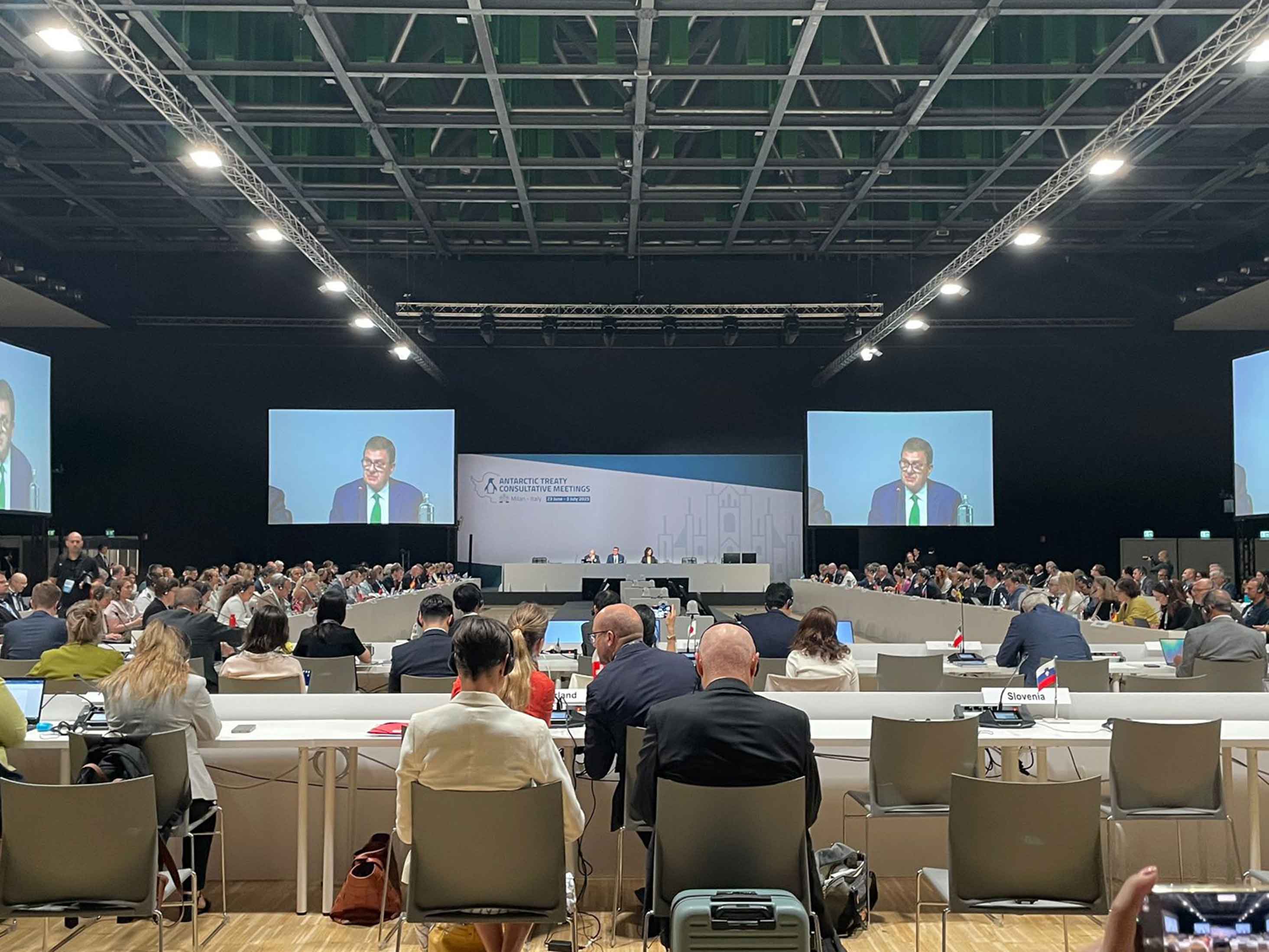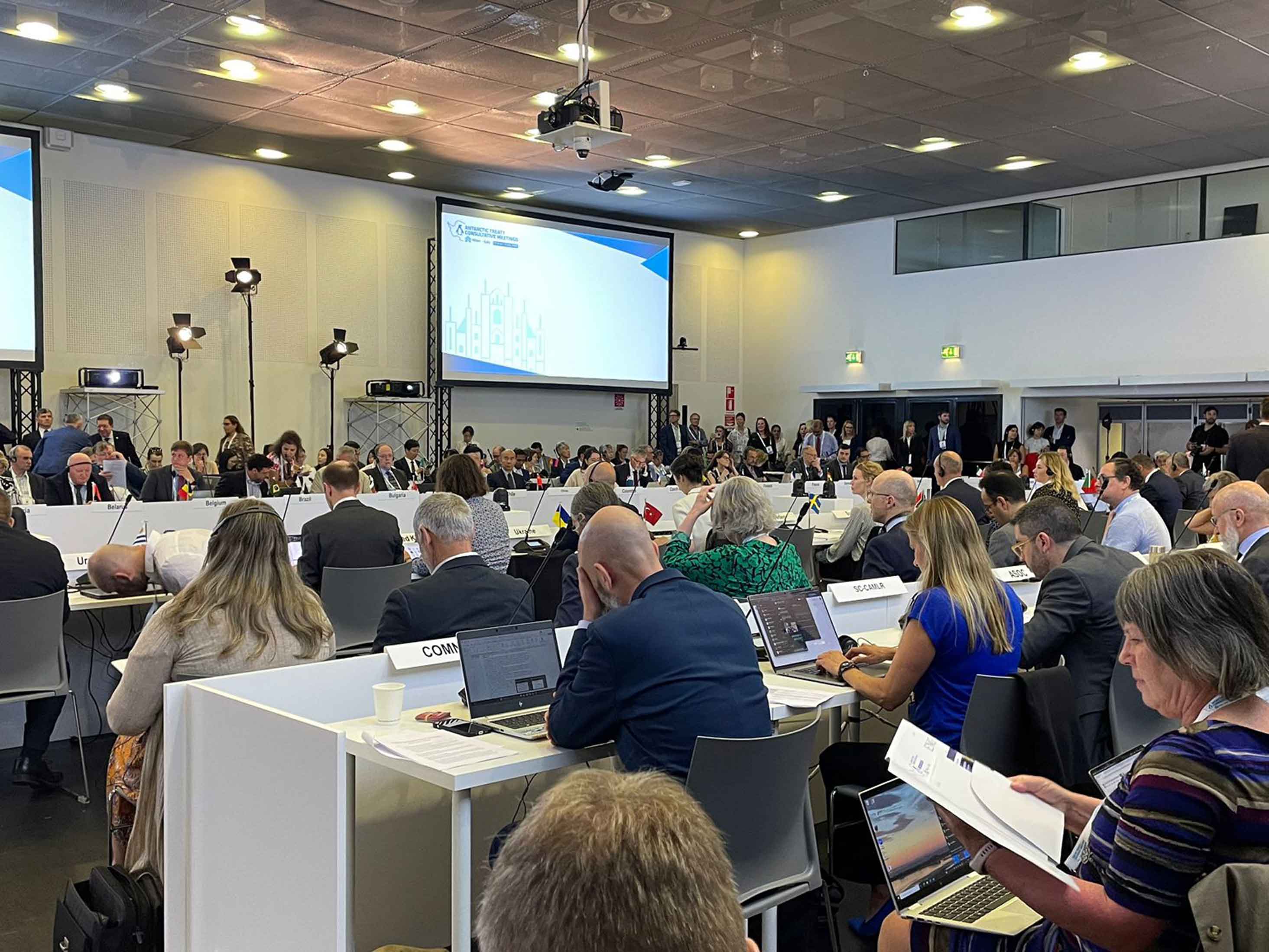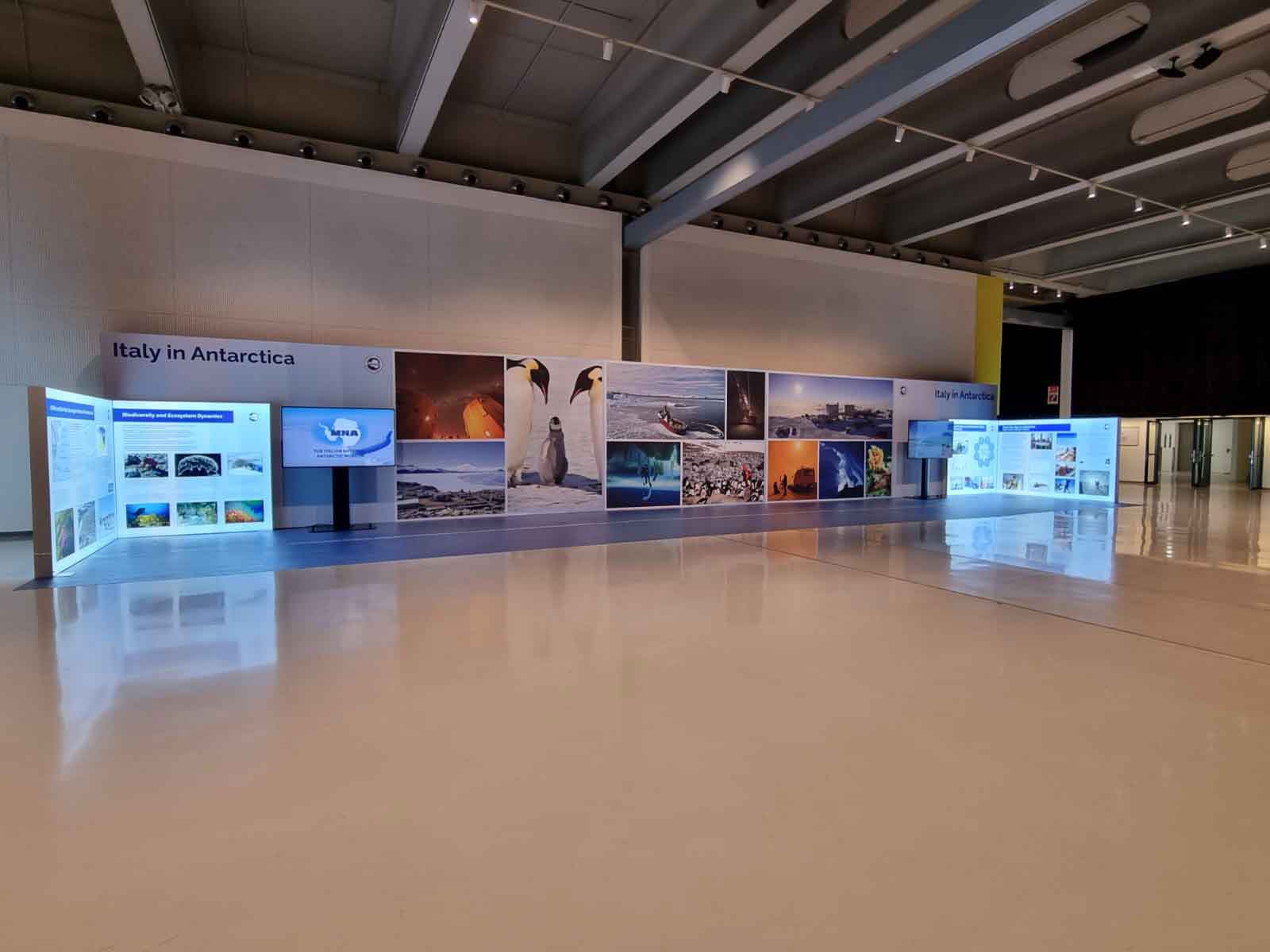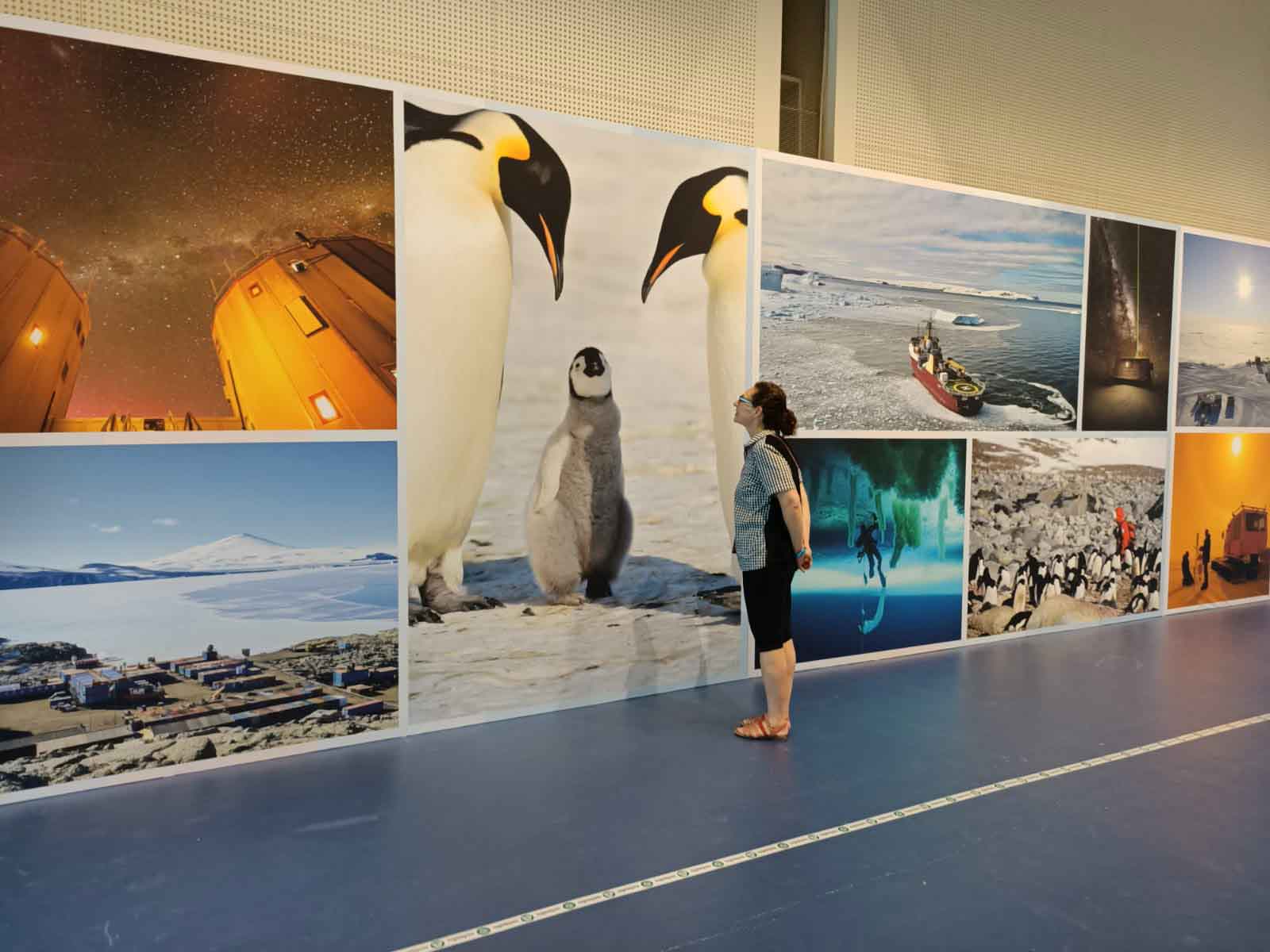
OGS at the Antarctic Treaty Consultative Meetings – ATCM
The Antarctic Treaty Consultative Meetings (ATCM) took place in Milan from 23 June to 3 July.
The ATCM brings together representatives of all signatory states to the Antarctic Treaty as well as observers and invited experts. It is held annually to exchange information, consult on matters of common interest relating to the Antarctic and to formulate, review and recommend to governments measures to support the principles and objectives of the Treaty.
The meetings are hosted each year by one of the 29 Consultative Parties — decision-making members of the 58 signatory states.
At this year’s edition in Italy, the OGS was represented by the exhibition “Italy in Antarctica” and by the participation of glaciologist Florence Colleoni, who was part of the delegation of the Scientific Committee for Antarctic Research (SCAR).
Italy in Antarctica is an exhibition dedicated to the National Antarctic Research Programme (PNRA), with a particular focus on topics related to the Antarctic Treaty System. The project is sponsored by the National Scientific Commission for Antarctica (CSNA) with the support of the Ministry of University and Research and curated by the National Antarctic Museum and the National Research Council (CNR) in collaboration with ENEA and OGS as part of the PNRA’s outreach and education initiatives.
The exhibition was on display during the days of the meeting and will later feature in a larger commemorative exhibition celebrating 40 years of the Italian presence in Antarctica, planned for December 2025 at the CNR headquarters in Rome.
As for Florence Colleoni’s participation, she attended the meeting as part of the SCAR delegation, which plays a key role in providing relevant scientific data and information for the treaty talks. This helps member countries to make informed and evidence-based decisions on various initiatives and resolutions.
Several important scientific and policy issues were addressed in the discussion panels Colleoni attended, including the protection of Antarctic biodiversity, the impact of pollutants, the current state of the Antarctic climate, responses to ongoing climate change and the global consequences of Antarctic ice melt.



